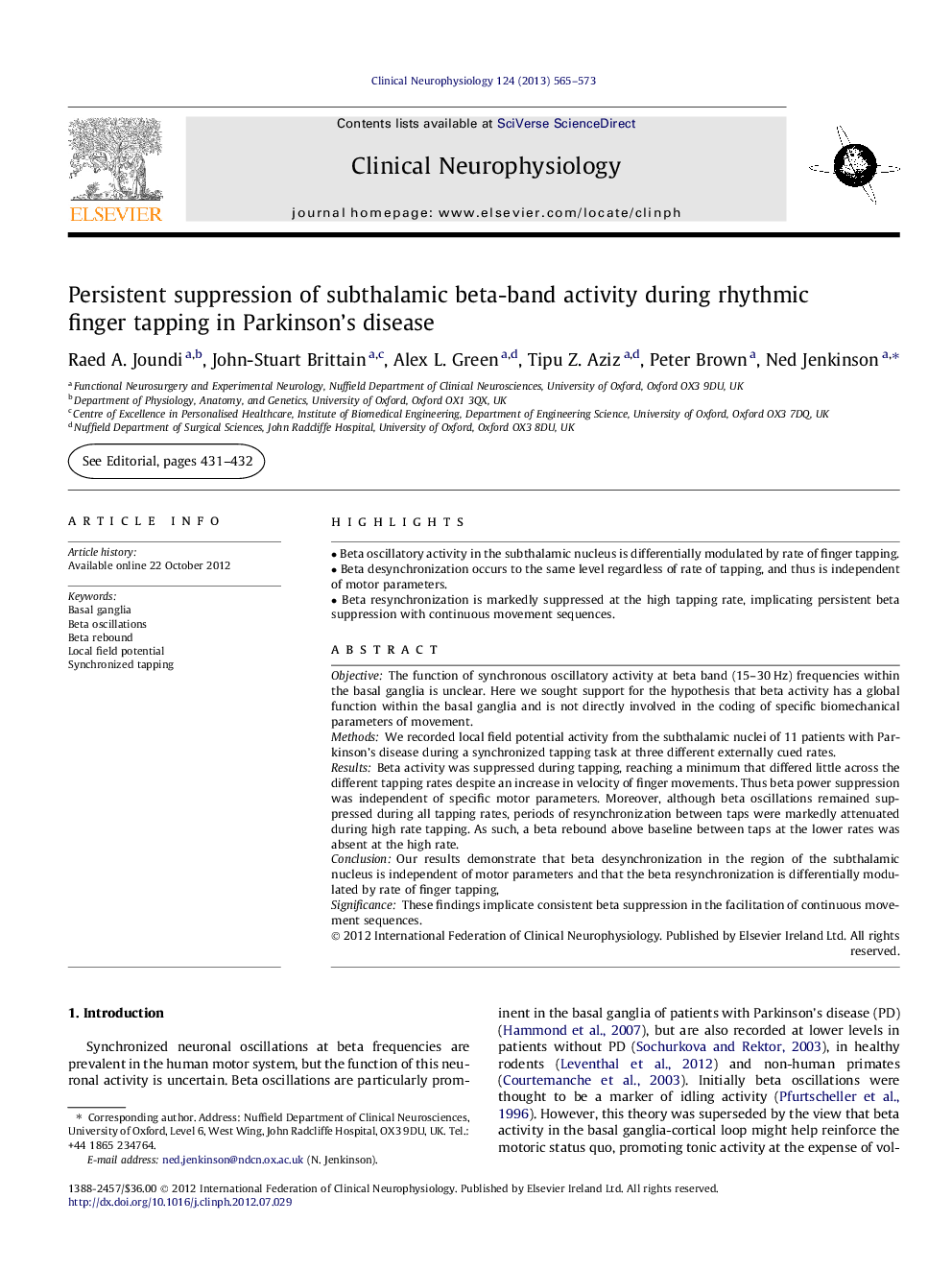| Article ID | Journal | Published Year | Pages | File Type |
|---|---|---|---|---|
| 3044370 | Clinical Neurophysiology | 2013 | 9 Pages |
ObjectiveThe function of synchronous oscillatory activity at beta band (15–30 Hz) frequencies within the basal ganglia is unclear. Here we sought support for the hypothesis that beta activity has a global function within the basal ganglia and is not directly involved in the coding of specific biomechanical parameters of movement.MethodsWe recorded local field potential activity from the subthalamic nuclei of 11 patients with Parkinson’s disease during a synchronized tapping task at three different externally cued rates.ResultsBeta activity was suppressed during tapping, reaching a minimum that differed little across the different tapping rates despite an increase in velocity of finger movements. Thus beta power suppression was independent of specific motor parameters. Moreover, although beta oscillations remained suppressed during all tapping rates, periods of resynchronization between taps were markedly attenuated during high rate tapping. As such, a beta rebound above baseline between taps at the lower rates was absent at the high rate.ConclusionOur results demonstrate that beta desynchronization in the region of the subthalamic nucleus is independent of motor parameters and that the beta resynchronization is differentially modulated by rate of finger tapping,SignificanceThese findings implicate consistent beta suppression in the facilitation of continuous movement sequences.
► Beta oscillatory activity in the subthalamic nucleus is differentially modulated by rate of finger tapping. ► Beta desynchronization occurs to the same level regardless of rate of tapping, and thus is independent of motor parameters. ► Beta resynchronization is markedly suppressed at the high tapping rate, implicating persistent beta suppression with continuous movement sequences.
